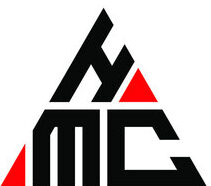TORONTO – Statcast’s newly public bat-tracking data dropped at the beginning of the week and right there at the very bottom of the majors in average bat speed were the Toronto Blue Jays.
The numbers weren’t entirely surprising given how closely they corresponded to their ongoing offensive struggles – last in average exit velocity, tied for the third-fewest home runs and with the fifth-lowest slugging percentage entering Friday.
Still, the objective data starkly demonstrating why the Blue Jays don’t do enough damage at the plate helps reframe the public conversation about their offensive woes. They don’t get their best swings off often enough, that’s an issue, and correcting that isn’t simply a matter of just swinging harder.
“No, it’s not – that’d be great if it was,” explained assistant hitting coach Matt Hague. “It’s kind of a slippery slope. It’s at what cost? What are you sacrificing? If you were to talk to each player, they would probably say something around that same thing. Bat speed is important, but it’s also a function of other things.”
For a team that spent the off-season trying to address the offensive shortcomings of 2023 that were deemed to be an outlier, that’s a bad place to be past the quarter-mark of the new season. The Blue Jays fell deeper into the muck Friday, when lefty Tyler Alexander was perfect through the first 22 batters before surrendering a one-out single to Danny Jansen and a two-run homer to Davis Schneider during a three-run eighth inning rally, too little, too late in a 4-3 loss to the Tampa Bay Rays.
At 19-24, they dropped five games below .500 for the first time this year and while there’s ample runway remaining, they’ve yet to play with the consistency needed to emerge from the hole they’ve dug.
“It’s a long season, it’s not really so-called time to worry in that aspect of it. It’s more so just the urgency to fix things now,” said Chris Bassitt, who threw five shutout innings before allowing three runs in the sixth. “There’s obviously a point in the season where you look at it, and you’re like, we’ve got to make changes, whatever it may be. I’m not saying that right now’s the time to do that. We’ve just got to play better.”
That starts at the plate, where the bat-speed data is not new to the Blue Jays or other clubs, who have had the information for a few years now. During that time, they went from an offence that in 2021 was third in the majors in runs and in 2022 was fourth, to one that in 2023 was 14th and this year 29th.
An area of focus the past three years has been on “swing decisions,” said manager John Schneider, “and if you look up, I think we’re top five in baseball in terms of what we’re swinging at and on the lower end of what we’re doing with those pitches. (Hitting the ball harder) is where our focus has shifted to before the year started. So just waiting for that to hopefully even out a little bit.”
Easier said than done, of course, since actions in the batter’s box are always about trade-offs. Harder swings can mean less contact, an area where the Blue Jays have markedly improved, so “when you are hitting the ball hard at the expense of probably striking out, how do you make yourself swing at better pitches and still hit the ball hard?” said Schneider. “I think we’ve kind of tackled that. And in doing so, I’m not in a hitter’s mind, but does that affect the intent with which they’re swinging? That’s kind of where we’ve landed this year, really. And just making sure that they understand, yes, you’re swinging at good pitches, don’t be afraid to turn it loose. And get the best out of whatever your best is.”
In that way, bat speed is only part of the story, even if it is a key part of the total picture.
Hague likes to think of bat speed as a threshold that combines with swing path and depth of path to create a player’s so-called ‘A’ swing. The goal, of course, is for hitters to use that as often as possible, but there are layers around deployment.
“Like, do we get our A swings off after off-speed misses below the zone? Do you get your A swing off on the next fastball? Off-speed can blend into fastball timing, for instance,” said Hague. “Let’s say a hitter’s best bat speed is one where the barrel works really vertical. That’ll be good against a sinker guy but terrible against a four-seam guy. In theory having adjustable hitters, hitters that can adjust but have still decent bat speed, that’s kind of the sweet spot you want to go in. And there is a time and place for a guy just to let it eat on certain pitchers.
“So it’s like this fun balance, an assessment of what does it sacrifice when we do get our A swings off, what’s the tendency (of the pitcher) and trying to match that up,” he continued. “And right now we’re honing down on making sure we’re getting more of our A swings off. Where our barrel speeds are right now, we can’t run from it. It’s bottom of the league. … But what does it sacrifice to be able to achieve that?”
Somewhere in that murky grey lies the answer to the Blue Jays’ offensive issues.
Some of it is no doubt personnel-related – in 2021, for instance, their lineup included Marcus Semien, Teoscar Hernandez and Lourdes Gurriel Jr. – but there still should be more production in the current lineup than they’ve shown.
The Blue Jays are trying to use their game planning to unlock the missing pop, trying to get their best swings off in advantage counts, with some of the contact-oriented swings coming with two strikes.
“A lot of it is them understanding like, hey, this is a guy you can go take your normal swing off, or this is a guy where you might have to be a little different from what your swing path is,” said Hague. “The tough part is trying to navigate those without ever sacrificing intent and that’s what we’re really trying to hone down on right now with the team.”
Mindset is part of it, too.
Bo Bichette, who had two more hard-hit balls on an 0-for-4 night, ranks 164th in the majors with an average bat speed of 70.3 m.p.h., but in terms of the number of balls he’s squared up, he ranks 37th at 69 despite a quiet start to the season.
“I would always try to figure out how to get your best swing off,” he said. “Obviously if you’re swinging as hard as you can and you’re missing every ball in BP, that’s probably not the way to go. For me personally, when I don’t hit well, I’m (just trying to make contact), which isn’t always the best recipe. If you’re always focused on (making contact) you aren’t necessarily getting all of your talent out there.”
And when even the intent is right, the feel and mechanics play into producing the best bat speed, too.
“Just making sure I’m on time,” Davis Schneider, second on the Blue Jays with five homers, said of his keys for using his A swing. “You can have a good swing, but if you’re not on time, then you’re not going to put a good barrel on it.”
Too often this season and last, the Blue Jays haven’t put enough good barrels on the ball, which is why they are where they are. Correcting that isn’t only a matter of swinging harder, it’s a matter of swinging better, too.

